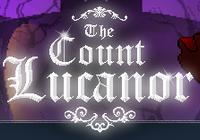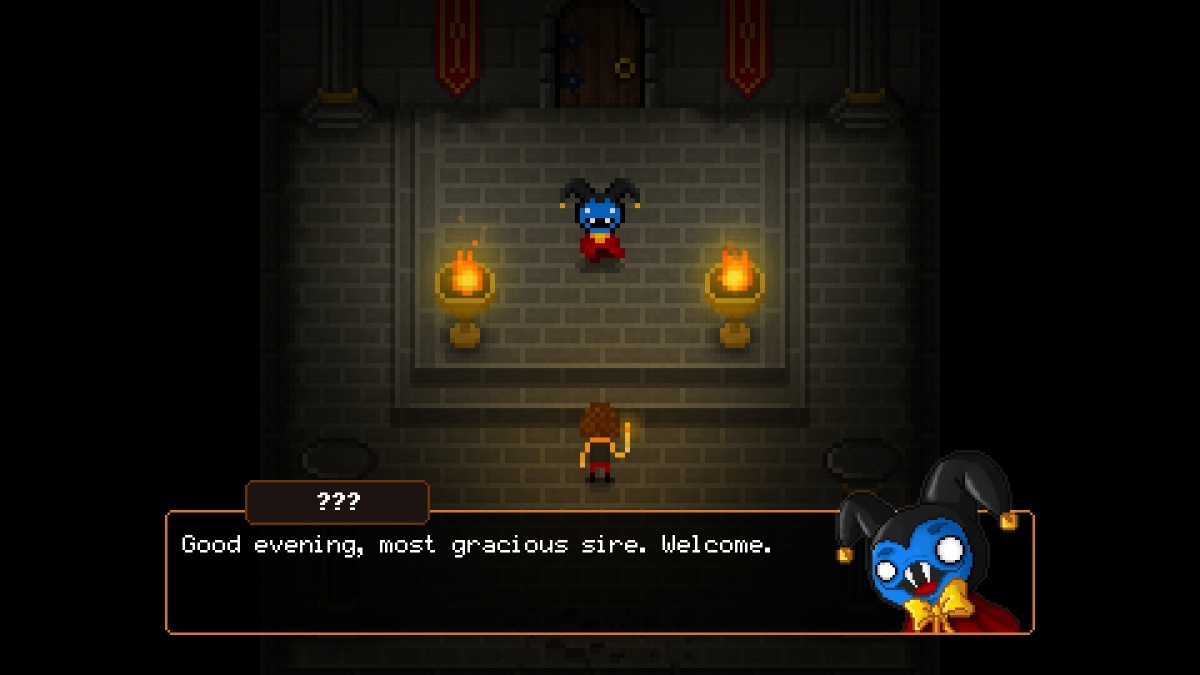The Count Lucanor (PC) Review
By Olivia Falk  10.06.2017
10.06.2017

Pulling off good horror with pixel art is difficult. Titles like Lone Survivor come to mind as somewhat recent examples of pixelated horror done right, but such games are far from the household names that Outlast, Amnesia, and even Slender have become. Part of the reason for that may be that it's difficult to properly set up jump scares when playing from what is generally a pulled-out, third-person view; giving the player so much vision can undercut the effectiveness of such surprises. To combat this, many "bit horror" games choose the same tactic chosen by The Count Lucanor: the horror comes from the imagery and circumstances rather than their sudden presentation.
It's Hans' tenth birthday, and he's eagerly looking forward to the festivities. Unfortunately for him, his father is away fighting in a war, leaving Hans and his mother to live in poverty; a birthday party is off the table from a financial standpoint. This infuriates Hans, who determines that, being the self-sufficient adult he is (who still needs a birthday party), he's going to run away from home. Hans' mother attempts to stop him, but ends up conceding, giving what little she can to her spoiled millennial of a son in the hopes of helping him on his journey.

The sun is shining, the fields are colourful, and Hans' confidence is at an all-time high. He meets up with various strangers who ask for some of the items that his mother provided him, but otherwise the journey is one of solitude. There are some odd things, though. Despite being bright and cheery, each area has a foreboding name, e.g. "Hangman's Woods". A strange raven appears, seemingly following Hans. Plus, each person seems to be a little bit...off.
Well, it turns out that things are rather "off", as Hans soon find himself lost in a nightmarish world and subsequently trapped in Tenebre Castle: the haunting home of Count Lucanor. His (oddly adorable) kobold host explains that the count has a fortune in the castle that could be all Hans'...provided he can figure out the kobold's name. The good news is that the letters can be found scattered throughout the castle. The bad news is, well, everything else that's scattered around in there.

Hans' journey through the castle forces him to solve puzzles, collect items, evade monsters, and navigate treacherous mazes. The game's four-ish hour runtime serves this structure well, as it goes for long enough that a variety of tasks can be introduced, while also avoiding a need for unnecessary repetition. Hans' walking speed does create a longing for a sprint button, though; after tiptoeing down a hallway, it would be nice to have a faster way of getting back.
There is a good reason for using caution while navigating, though: lighting is extremely limited. Many rooms are in near-complete darkness, and threats can come from any side. This is where Hans' most important tool comes into play: candles. Carrying one will illuminate a small area around Hans, but candles can also be placed on the ground to act as permanent torches. The downside is that there's a limited supply of them; while more can be found, they can be surprisingly scarce, especially early on. It becomes a trade-off of placing candles to make sure nothing's in front of (or behind!) Hans while ensuring that he'll still be able to light the path ahead.

One of The Count Lucanor's most interesting (and stressful) mechanics is its save system. Every save costs a gold coin, and they're in even shorter supply than the candles. There's also a shop that sells items that can significantly assist Hans, so striking a balance between buying items for survivability and saving coins for potential deaths becomes critical. Unfortunately, replaying sections can be frustrating due to unskippable dialogue sequences and puzzles that, once solved, become more tedious to repeat than anything. As such, being stingy with saves feels like more of a punishment than it should.
However, the puzzles do manage to be thought-provoking without being obtuse; a walkthrough was never needed, and the game never overwhelms with options when it comes to usable items. The menagerie of critters that haunt the mansion are all unsettling in their own way, and stumbling into any of them in the dark tends to at least elicit a twitch. It's just a shame that their erratic movement patterns can mean that sometimes Hans ends up trapped in hiding for minutes at a time while a monster mindlessly paces back and forth in front of him.

Cubed3 Rating
Very Good - Bronze Award

The Count Lucanor is a clever little horror game that succeeds in avoiding cheap scares in favour of some truly disturbing moments. In an ironic twist, most, if not all, of the actual "jump scares" are caused by Hans rather than directed towards him. Additionally, the game features several shiver-inducing moments, varied endings (most of which can be seen by saving right before the final area), and a lovely presentation that includes chiptune covers of classical Bach pieces. It's nothing revolutionary, but for a few unsettling hours of addictive puzzle solving, Hans' journey through Tenebre Castle is worth a look.
Plus, that kobold is just so darn cute!

![]() 7/10
7/10
![]() 0
(0 Votes)
0
(0 Votes)
 Out now
Out now  Out now
Out now  Out now
Out now  Out now
Out now Comments
Comments are currently disabled

 Sign In
Sign In Game Details
Game Details Subscribe to this topic
Subscribe to this topic Features
Features





 Top
Top

